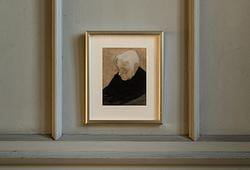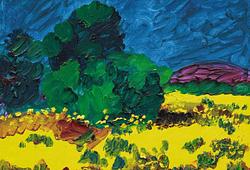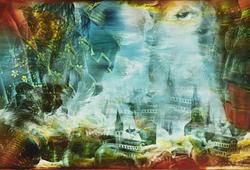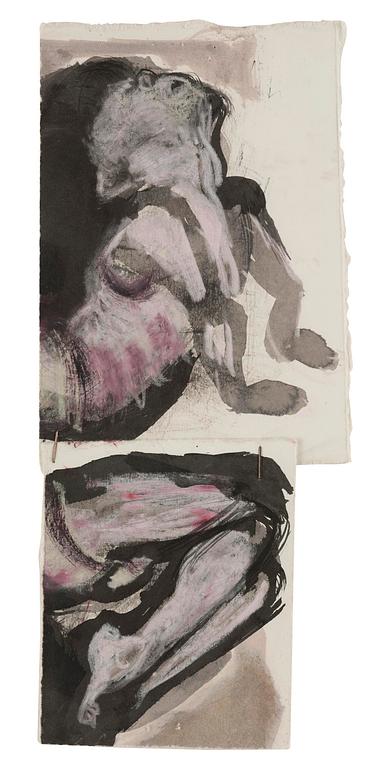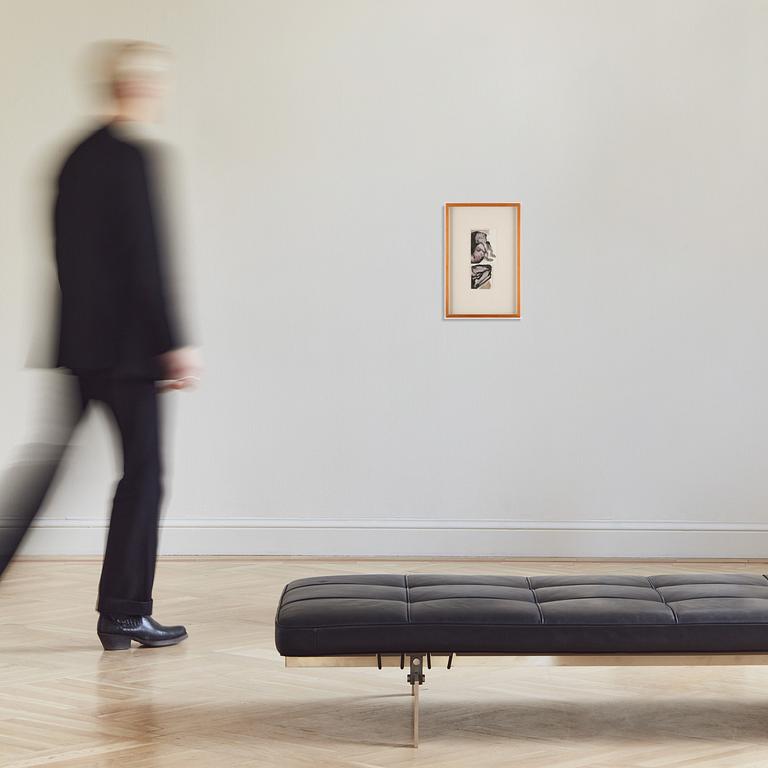Marlene Dumas
"Two Parts"
Signed M. Dumas and dated 1991 on paper in an envelope affixed verso. Ink and gouache on paper 18 x 12 cm.
Provenance
Anders Tornberg Collection, Lund.
Private Collection, Sweden.
More information
In the painting "Two Parts", Marlene Dumas depicts a naked human body, visually divided into two segments. The work bears clear hallmarks of her artistic language: a gestural, almost dissolved expression, where the body emerges through intuitive and expressive painting in ink and gouache. With a restrained yet emotionally charged color palette, Dumas shapes a portrait that is both vulnerable and powerful - a figure reduced to its most fundamental forms. Divided, fragmented, yet intensely present.
The painting is a clear example of the themes that permeate Dumas’ artistry: corporeality, identity, intimacy, and the subtle psychological landscape that exists between seeing and experiencing. The divided body in "Two Parts" can be read as an image of separation - both physical and emotional - but also as a formal exploration of composition, perception, and the body's presence in space.
The work was created during a period when Dumas, long based in Amsterdam, was gaining increasing international recognition. By then, she had already begun to articulate the artistic language that today makes her one of the most influential painters of our time. She often bases her work on photographic sources – both private images and mass media motifs - which she transforms into paintings where reality is filtered through her body.
Today, Marlene Dumas is represented in several of the world’s most prestigious museum collections, including MoMA in New York, Tate Modern in London, Centre Pompidou in Paris, and the Stedelijk Museum in Amsterdam. She has been the subject of major retrospective exhibitions at institutions such as Tate Modern (2015), Fondation Beyeler (2015), Musée d'Orsay (2021), and Palazzo Grassi in Venice (2022). In 2025, she will participate in the group exhibition "Corps et âmes" at Bourse de Commerce in Paris, as well as present a solo exhibition, "Cycladic Blues", at the Museum of Cycladic Art in Athens.




